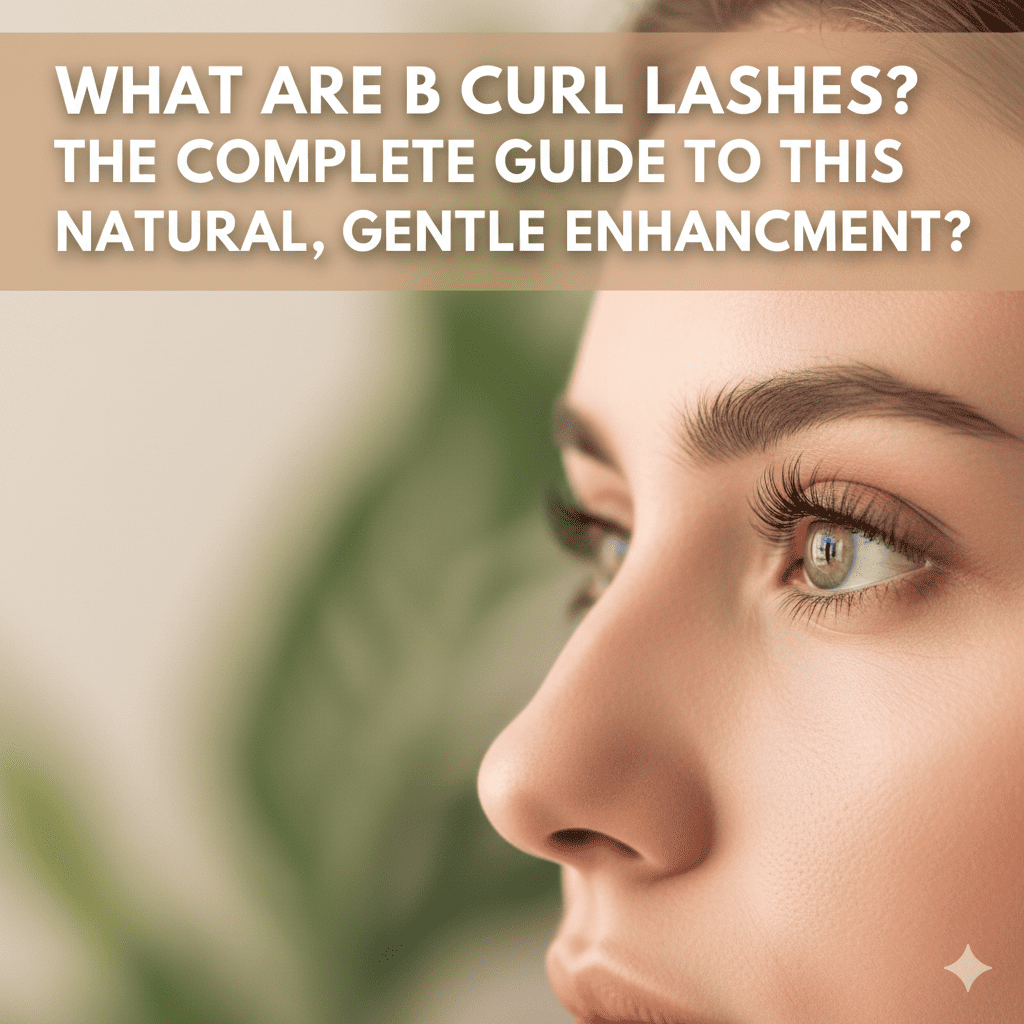Confused by all the lash material choices out there? It’s hard to know which one truly offers the best quality and performance for your clients and your art.
PBT (Polybutylene Terephthalate) dominates because it’s a high-performance synthetic material that offers superior softness, curl retention, and consistency. This makes it ideal for professional lash extensions, providing a reliable and beautiful result every time. 1

Understanding lash materials is key to providing top-tier services and selecting the best products for your business, like we strive to do at UBLash. Let’s dive deeper into why PBT has become the industry standard and how it compares to other options.
What Exactly is PBT Material in Lash Extensions?
You’ve probably heard "PBT" mentioned constantly, but what is it? It sounds technical, but understanding its nature is simple and reveals why it’s so popular.
PBT, or Polybutylene Terephthalate, is a type of polyester, a high-performance engineering thermoplastic. In lash extensions, it’s processed into fine fibers that mimic natural lashes but with enhanced properties.
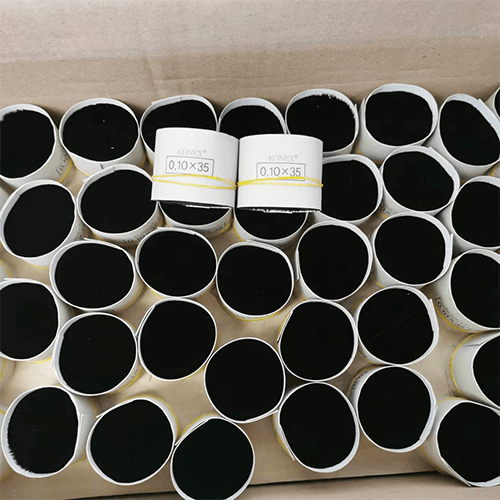
When I first started in the industry, I was curious about what made some synthetic lashes feel so much better than others. The answer, I learned, was often the quality of the PBT used and how it was processed. It’s not just "plastic"; it’s a specialized material.
PBT Unpacked: The Science Bit
PBT belongs to the polyester family of polymers. It’s chosen for lash extensions due to several key characteristics:
- Strength and Resilience: It can be made into very fine fibers without breaking.
- Shape Memory: This is crucial for holding a curl.
- Non-Porous Surface: It doesn’t absorb moisture easily, which helps with longevity and hygiene.
- Dyeability: It can be deeply and consistently dyed, usually to a rich black, but other colors are possible.
Manufacturers, like us at UBLash, select specific grades of PBT and utilize precise extrusion and finishing processes to create lashes with desired curls, thicknesses, and lengths. The quality of the raw PBT and the manufacturing process significantly impact the final product’s softness, consistency, and curl retention.
| Feature | PBT Characteristic | Benefit for Lash Extensions |
|---|---|---|
| Material Type | Engineering Thermoplastic (Polyester) | Strong, stable, can be finely processed |
| Surface | Non-porous | Resists moisture, maintains hygiene, lightweight |
| Curl Potential | Excellent shape memory when heat-treated | Holds curl very well over time |
| Consistency | Can be manufactured to precise specifications | Uniformity in length, curl, and diameter |
So, when you see "PBT lashes," you know you’re looking at a product specifically engineered for performance in lash applications.
Is PBT Really a Good Material for Lash Extensions?
With so many claims in the beauty world, you might wonder if PBT lives up to the hype. Is it genuinely a superior choice for professional lash extensions?
Yes, PBT is widely considered an excellent, if not the best, material for lash extensions due to its balance of softness, durability, curl retention, and hypoallergenic properties. It consistently delivers professional results.

From my experience working with various materials and feedback from clients like Sophie who value quality, PBT consistently comes out on top for overall performance and client satisfaction. It provides the beautiful, lasting results that professionals aim for.
Why PBT Excels:
PBT isn’t just "good"; it has specific advantages that make it ideal for this delicate application:
- Natural Look and Feel (High-Quality PBT)1: Premium PBT can be incredibly soft and flexible, closely mimicking the feel of natural lashes. While some cheaper synthetics can feel stiff, quality PBT doesn’t.
- Consistency2: Unlike natural materials like mink, PBT lashes are manufactured. This means every lash in a tray can have the exact same curl, length, and thickness, leading to more predictable and uniform lash sets. This is a huge plus for artists striving for perfection.
-
Hypoallergenic3: Being a synthetic material, PBT is less likely to cause allergic reactions compared to animal-derived products like real mink. This is crucial for client safety and comfort.
3
- Durability & Maintenance: PBT lashes maintain their integrity well over the wear period. They don’t easily lose their curl or shape with exposure to water or daily activities. 2
| Aspect | PBT Performance | Importance for Lash Artists & Clients |
|---|---|---|
| Softness | Can be very soft, especially higher grades | Client comfort, natural feel |
| Curl Retention | Excellent, especially when properly processed | Lasting beautiful look, less client complaint |
| Consistency | High uniformity in manufacturing | Predictable results, easier application |
| Hypoallergenic | Generally very low risk of allergic reaction | Client safety, wider client suitability |
| Durability | Strong and resilient to daily wear | Longer-lasting extensions, client satisfaction |
While no material is perfect for every single preference, PBT offers the most comprehensive set of desirable traits for the vast majority of lash extension applications.
How Does PBT Define "Synthetic" in Lash Extensions?
The term "synthetic" can sometimes have a cheap connotation. So, how does PBT elevate the meaning of "synthetic" when we’re talking about high-quality lash extensions?
PBT defines "synthetic" in lashes as a specifically engineered polymer (Polybutylene Terephthalate) chosen for its superior qualities like curl retention, consistency, and durability, making it ideal for professional lash artistry. 1 It’s not just any plastic.
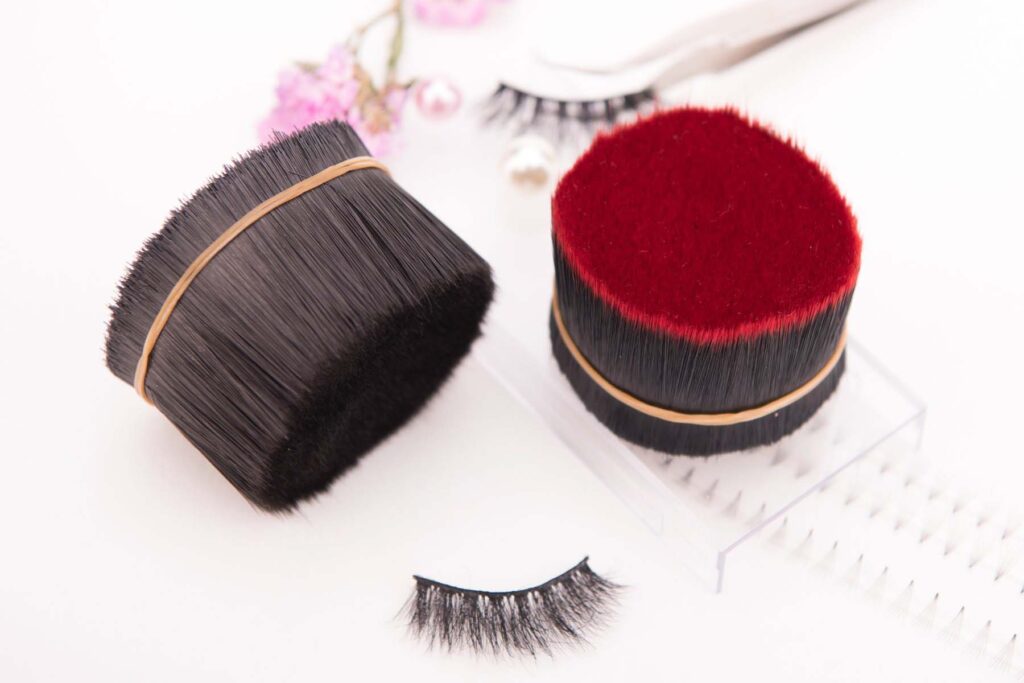
When I explain materials to clients or trainees, I emphasize that "synthetic" in this context means "purpose-built." Unlike materials borrowed from other industries or natural fibers with inherent variabilities, PBT is optimized for eyelash extensions.
PBT: Engineered for Excellence
The "synthetic" nature of PBT offers several advantages that natural materials struggle to match:
- Controlled Manufacturing: PBT fibers are created through an extrusion process. This allows manufacturers like UBLash to precisely control the diameter, taper, and even the microscopic texture of the lash. This level of control is impossible with natural hairs.
- Consistent Quality: Each batch of PBT lashes can be made to the same high standards. This means a C curl 0.07mm lash today will be identical to one produced months later. This consistency is vital for professional artists who rely on predictable products.
- Enhanced Properties: PBT is chosen because it can be treated to hold a curl exceptionally well, even when exposed to moisture or temperature changes. Other synthetics like basic nylon might not perform as well. 2
- Ethical and Hygienic: Being synthetic, PBT lashes are inherently cruelty-free and vegan. 3 They are also non-porous, making them more hygienic as they are less likely to harbor bacteria compared to porous natural fibers.
| Characteristic | PBT "Synthetic" Implication | Advantage in Lash Extensions |
|---|---|---|
| Origin | Man-made polymer | Ethical, vegan, consistent supply |
| Manufacturing | Extrusion & controlled processing | Precise dimensions, curls, and quality control |
| Performance | Engineered for shape memory & resilience | Superior curl retention, durability |
| Hygiene | Non-porous | Less prone to bacterial buildup, easy to clean |
So, while "synthetic" can mean many things, in the world of professional lash extensions, PBT represents a high-tech, reliable, and performance-driven choice. It’s about leveraging material science for beauty.
Are There Any Disadvantages to Using PBT Lashes?
PBT sounds pretty great, but is it perfect? Every material has its nuances, so what potential downsides or considerations should lash artists be aware of with PBT?
While PBT is overwhelmingly advantageous, potential disadvantages are minor and often related to quality variations or specific aesthetic preferences compared to, say, ultra-fine natural mink. Extremely low-quality PBT might feel stiff.
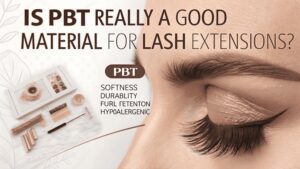
It’s important to acknowledge that not all PBT is created equal. As a supplier, UBLash focuses on sourcing premium PBT to avoid common pitfalls. However, if an artist unknowingly chooses very cheap, poorly processed PBT, they might encounter issues.
Potential Considerations with PBT:
- Quality Variation: The biggest "disadvantage" isn’t inherent to PBT itself, but to the range of quality available. Low-grade PBT can be stiffer, shinier, or have less consistent curls than premium PBT. This is why choosing a reputable supplier is crucial.
- Ultra-Natural Look (vs. Real Mink): While high-quality PBT can be incredibly soft and matte, some purists might argue that real mink fur has a unique, ultra-fine, wispy quality that even the best PBT can’t perfectly replicate. However, the ethical concerns and inconsistency of mink often outweigh this for most. 1
- "Too Perfect" Appearance for Some: Because PBT allows for such uniformity, some clients or artists aiming for a very organic, slightly irregular look might find them too consistent. However, techniques like mixing curls and lengths can address this.
- Not Biodegradable: Being a type of plastic, PBT is not biodegradable. This is an environmental consideration, though the actual volume of lash extension waste is relatively small compared to other plastic uses. The industry is exploring more sustainable options, but PBT’s performance currently keeps it at the forefront.
| Potential Issue | Elaboration | Mitigation/Perspective |
|---|---|---|
| Stiffness/Shine | Can occur with lower-quality PBT grades or certain finishes. | Choose reputable suppliers offering matte, soft PBT (like UBLash’s range). |
| Ultra-Fine Mimicry | Real mink has a unique featheriness that’s hard to exactly duplicate. | Modern PBT is very close; ethical & consistency benefits of PBT are significant. 3 |
| Uniformity | Can look "too perfect" if a very natural, varied look is desired. | Artist can mix curls/lengths; many clients prefer the uniformity. |
| Environmental Impact | Not biodegradable, as it’s a plastic. | Focus on quality for longevity, proper disposal; industry exploring alternatives. |
Overall, the disadvantages are minimal and often manageable by selecting high-quality PBT products and employing skilled application techniques. The benefits for performance, consistency, and ethics generally make PBT the preferred choice.
What Other Materials Are Similar to PBT Lashes?
If PBT is the king, are there any other synthetic contenders or materials that share some of its desirable characteristics in the lash extension world?
Other synthetic materials like certain types of nylon or other polyesters can be used, but PBT is specifically favored for its superior combination of softness, resilience, and heat resistance for curl retention. Faux mink lashes are PBT, designed to mimic mink. 5

While exploring options, I’ve seen various "synthetic" lashes. However, when you dig into what high-performing brands use, it consistently comes back to PBT or materials that try to emulate PBT’s success. For example, "silk" lashes are often PBT with a specific finish. 5
Exploring Alternatives and "Similar" Materials:
- Other Polyesters/Plastics (e.g., PET): Polyethylene Terephthalate (PET) is a common polyester, but PBT is generally considered superior for lash extensions due to its better heat resistance and elasticity, which are key for curl integrity and a softer feel.
- Nylon: Some very cheap synthetic lashes might be made from basic nylon fibers. 4 While nylon is strong, it generally doesn’t offer the same softness, consistent curl retention, or lightweight feel as quality PBT. It can be more prone to kinking or losing its curl.
- "Silk" Lashes: This term can be a bit misleading. True silk fibers (from silkworms) are rarely used for extensions due to cost, fragility, and ethical concerns. Most "silk" lashes on the market are actually made from PBT, but are given a shinier or more tapered finish to differentiate them. 5 They aim for a lightweight, flexible feel.
- "Faux Mink" Lashes: These are specifically designed to emulate the luxurious feel and appearance of real mink fur. 5 The best faux mink lashes are made from very fine, high-quality PBT fibers that are often double-tapered and given a matte or low-sheen finish. They offer the mink look without the ethical issues or curl loss of real mink. [2, 3] UBLash specializes in these premium PBT faux mink options.
| Material Type | Common Use in Lashes | Similarity to PBT | Key Differences from PBT |
|---|---|---|---|
| Other Polyesters (e.g. PET) | Less common for high-quality extensions | Synthetic polymer | Often less heat resistant, potentially stiffer |
| Nylon | Some lower-end synthetic lashes | Synthetic fiber 4 | Generally less soft, poorer curl retention, can be heavier |
| "Silk" Lashes | Common marketing term | Usually PBT with a specific finish (e.g., shinier) 5 | Primarily a branding/finish difference, not core material |
| "Faux Mink" Lashes | Very popular premium option | High-quality, fine PBT fibers 5 | Specifically processed for softness & matte finish to mimic mink |
Ultimately, while other synthetics exist, PBT has become the benchmark due to its optimal balance of properties. Many "named" lash types like silk or faux mink are fundamentally PBT, just marketed under a name that describes their intended finish or aesthetic.
So, What Is Truly the Best Material for Fake Eyelashes Overall?
With all this talk of PBT, mink, silk, and faux mink, what’s the final verdict? Which material genuinely stands out as the best for overall performance in fake eyelashes?
For professional lash extensions, high-quality PBT (often marketed as faux mink or premium synthetic) is overwhelmingly considered the best material overall due to its superior consistency, durability, curl retention, and hypoallergenic nature.

As someone who prioritizes quality and client satisfaction for UBLash, I firmly believe PBT offers the most reliable and beautiful results. It combines the best of all worlds: the luxurious look that clients desire and the practical performance that artists need.
Why PBT Takes the Crown:
The "best" can be subjective, but if we look at key performance indicators for professional lash extensions:
- Curl Retention: PBT is engineered to hold its curl significantly better than natural fibers like mink, which can straighten with moisture or over time. 2 This means less maintenance and longer-lasting beautiful results for the client.
- Consistency & Uniformity: PBT lashes are manufactured to precise specifications. 1 This ensures that every fan is perfect, every lash in the set is the correct length and curl, leading to a flawless, professional finish. Mink lashes, being natural hair, will always have variations. 2
- Hypoallergenic & Ethical: PBT is synthetic and sterile, making it a safer option for clients with sensitivities or allergies. 3 It’s also inherently cruelty-free, which is a major concern with real mink lashes. 3
- Durability & Resilience: PBT lashes are strong and can withstand daily wear and tear, oils, and cleansing better than more delicate natural fibers.
- Versatility: PBT can be made in an enormous range of diameters, lengths, curls, and even colors, allowing artists complete creative freedom.
| Feature | PBT (Premium Synthetic/Faux Mink) | Real Mink | Other Synthetics (Lower Grade) |
|---|---|---|---|
| Curl Retention | Excellent 2 | Poor to Fair (can lose curl) 2 | Fair to Poor |
| Consistency | Excellent (uniform) 1 | Poor (natural variations) 2 | Fair to Good |
| Hypoallergenic | Yes (generally) 3 | No (animal product, higher allergy risk) 3 | Yes (generally) |
| Ethics | Cruelty-free & Vegan 3 | Ethical concerns (animal fur) [1, 3] | Cruelty-free & Vegan |
| Durability | Very Good | Fair (more delicate) | Good |
| Cost to Artist | Moderate (good value for performance) | High | Low to Moderate |
While real mink offers a certain natural softness, its downsides in terms of ethics, cost, curl retention, and potential for allergies make PBT the more practical, reliable, and ethical choice for most professional applications. This is why PBT, especially in its high-quality faux mink iterations, truly dominates the professional market.
How Does PBT’s Durability Stack Up Against Real Mink Lashes?
Clients want lashes that last. When comparing PBT synthetic lashes to real mink fur, which one truly holds up better over time and through daily life?
PBT lashes are significantly more durable than real mink lashes. PBT maintains its structure, curl, and integrity better when exposed to moisture, oils, and general wear. 2

I’ve seen firsthand how mink lashes, while soft, can be quite delicate. Clients often found they needed to be extra careful, and the lashes could lose their shape more easily. PBT offers that robustness clients appreciate for a longer-lasting beautiful set.
Durability Deep Dive: PBT vs. Mink
- Material Structure: PBT is a robust polymer. It’s engineered to be resilient. Real mink fur, like any natural hair, is more susceptible to damage from environmental factors and mechanical stress (like rubbing eyes or sleeping).
- Moisture Resistance: PBT is non-porous. Water tends to bead off it. Mink fur can absorb moisture, which can cause it to lose its curl and become limp over time. This is a major factor in PBT’s superior curl retention. 2
- Oil Resistance: Natural oils from the skin or oil-based makeup removers can break down lash adhesive over time. While this affects all extensions, the PBT fiber itself is less affected by oils than natural mink hair, which can become heavy or clumpy.
- Curl Integrity: PBT’s "shape memory" means its curl is heat-set during manufacturing and is very resistant to falling. Mink lashes have a natural curl that is more easily lost, especially when wet. 2 Many mink wearers find themselves needing to re-curl their extensions.
- Wear and Tear: PBT lashes can generally handle more daily activity. They are less likely to kink, break, or frizz compared to the more delicate mink hairs.
| Durability Factor | PBT Synthetic Lashes | Real Mink Lashes |
|---|---|---|
| Structural Integrity | High, very resilient | Lower, more delicate |
| Moisture Impact | Minimal, non-porous | Can absorb, lose curl, become limp 2 |
| Oil Impact | Fiber itself is resistant | Can become weighed down, clumpy |
| Curl Robustness | Excellent, heat-set shape memory 2 | Prone to relaxing/straightening 2 |
| General Toughness | Withstands daily activities well | Requires more careful handling |
For clients like Sophie who value longevity and for lash artists who want to offer reliable, low-fuss results, PBT’s superior durability makes it the clear winner. It means happier clients who enjoy their beautiful lashes for the full duration of their lash cycle with less worry about damage.
What Gives PBT Lashes Their Impressive Heat and Humidity Resistance?
Ever had a client worry about their lashes drooping on a hot day or during a steamy shower? What makes PBT so good at resisting these common culprits?
PBT’s impressive heat and humidity resistance stems from its nature as a stable thermoplastic with a high melting point and low moisture absorption. The curl is set at a high temperature during manufacturing.

This is a key selling point I always emphasize. Clients can go on vacation to humid climates or enjoy a sauna (with care, of course, for the adhesive) and their PBT lash curls will generally remain intact, unlike more sensitive materials.
The Science of PBT’s Resilience:
- Thermoplastic Nature: PBT (Polybutylene Terephthalate) is an engineering thermoplastic. This means it can be melted and reformed. During lash manufacturing, the PBT fibers are extruded and then set into their desired curl using heat. This "heat-setting" process gives the lashes their shape memory.
- Glass Transition Temperature (Tg) & Melting Point (Tm): PBT has a relatively high glass transition temperature (the point at which it starts to soften) and melting point compared to the temperatures it would typically encounter in daily life (e.g., showers, saunas, hot weather). This means typical environmental heat isn’t enough to make it lose its molecularly set shape.
- Low Moisture Absorption: PBT is hydrophobic, meaning it repels water. It absorbs very little moisture from the air (humidity) or direct contact with water. Materials that absorb moisture can swell and lose their shape or curl as they dry. PBT’s resistance to this is crucial for maintaining curl in humid conditions or after getting wet. Compare this to natural fibers like mink, which readily absorb water and can lose their curl. 2
| Property | PBT Characteristic | Impact on Heat/Humidity Resistance |
|---|---|---|
| Material Type | Engineering Thermoplastic | Stable under typical environmental temperatures |
| Curl Setting | Heat-set during manufacturing at high temperatures | "Locks in" the curl, high shape memory |
| Moisture Absorption | Very low (hydrophobic) | Resists swelling, curl doesn’t droop when wet/humid |
| Thermal Stability | High Glass Transition & Melting Point | Withstands normal heat exposure without deforming |
This inherent material stability is why PBT lashes maintain their beautiful curl and appearance far better than natural fiber alternatives when faced with heat and humidity. It provides peace of mind for both the lash artist and the client.
Are PBT Lashes a More Comfortable Choice for Sensitive Eyes?
Client comfort is paramount, especially for those with sensitive eyes. How do PBT lashes fare in this regard compared to other materials like real mink?
Yes, PBT lashes are generally a more comfortable and safer choice for sensitive eyes, primarily because they are synthetic, sterile, and less likely to cause allergic reactions compared to animal-derived materials like mink. 3

Many clients, like Sophie’s customers who might be trying extensions for the first time or have had past sensitivities, specifically ask for hypoallergenic options. High-quality, lightweight PBT is my go-to recommendation for them.
Comfort Factors for Sensitive Eyes:
- Hypoallergenic Nature: PBT is a man-made polymer. It doesn’t contain the natural proteins or dander found in animal furs (like mink), which are common allergens. 3 This significantly reduces the risk of an allergic reaction on the eyelid or in the eye itself.
- Sterility: Reputable PBT lashes are manufactured in controlled environments and are sterile when packaged. Natural animal fibers carry a higher inherent risk of containing microscopic contaminants if not rigorously (and sometimes harshly) processed.
- Smoothness and Consistency: High-quality PBT fibers are very smooth and consistent in shape. 1 This means less likelihood of a stray, sharp, or rough edge irritating the eye or eyelid, compared to natural hairs which can have more texture or broken ends.
- Lightweight: PBT can be made into extremely fine and lightweight fibers (e.g., 0.03mm, 0.05mm). This minimizes any strain on the natural lash follicle, making them feel virtually weightless and comfortable, even for those with fine natural lashes or sensitive lash beds.
- No Chemical Processing Residues (Ideally): While mink fur requires significant cleaning and chemical processing (sometimes including dyes or perming solutions for curls) which can leave residues, PBT is colored and curled using heat and polymer-safe dyes during its extrusion, leading to a cleaner end product.
| Comfort Aspect | PBT Synthetic Lashes | Real Mink Lashes |
|---|---|---|
| Allergenicity | Low (synthetic, no animal proteins) 3 | Higher (animal dander/proteins, potential allergens) 3 |
| Sterility | High (manufactured, sterile packaging) | Variable (requires intensive cleaning/sterilization) |
| Fiber Texture | Smooth, consistent, less pokey 1 | Can be inconsistent, potential for rougher fibers |
| Weight | Very lightweight options available | Lightweight, but PBT can match or be lighter |
| Chemicals | Color/curl set with heat & polymer-safe dyes | May have residues from cleaning/perming chemicals |
While individual sensitivities can vary (some people might be sensitive to the adhesive rather than the lash material itself), PBT lashes offer a more reliably comfortable and lower-risk option for the majority of clients, especially those prone to allergies or irritation.
Conclusion
PBT synthetic lashes truly dominate the professional market due to their superior softness, consistent quality, lasting curl, and hypoallergenic nature, offering the best value for artists and clients.
-
Explore this link to understand how high-quality PBT enhances the natural look and feel of eyelash extensions, ensuring client satisfaction. ↩
-
Discover why consistency in lash extensions is vital for artists and how PBT achieves this uniformity for perfect results. ↩
-
Learn about the significance of hypoallergenic materials in eyelash extensions for client safety and comfort, especially for sensitive individuals. ↩

Fanny
Lash Technician
Hi, I’m Fanny, the author of this post.
Over the past 5 years, we have assisted numerous lash salons and technicians across 20 countries to build their lash brand and grow their businesses with high-quality lash extension products.
If you have any questions or need assistance, feel free to reach out for a free consultation or to discuss tailored solutions for your business needs.
More Interesting Posts
Bulk Lash Extension Purchasing: MOQ Negotiation & Volume Discounts
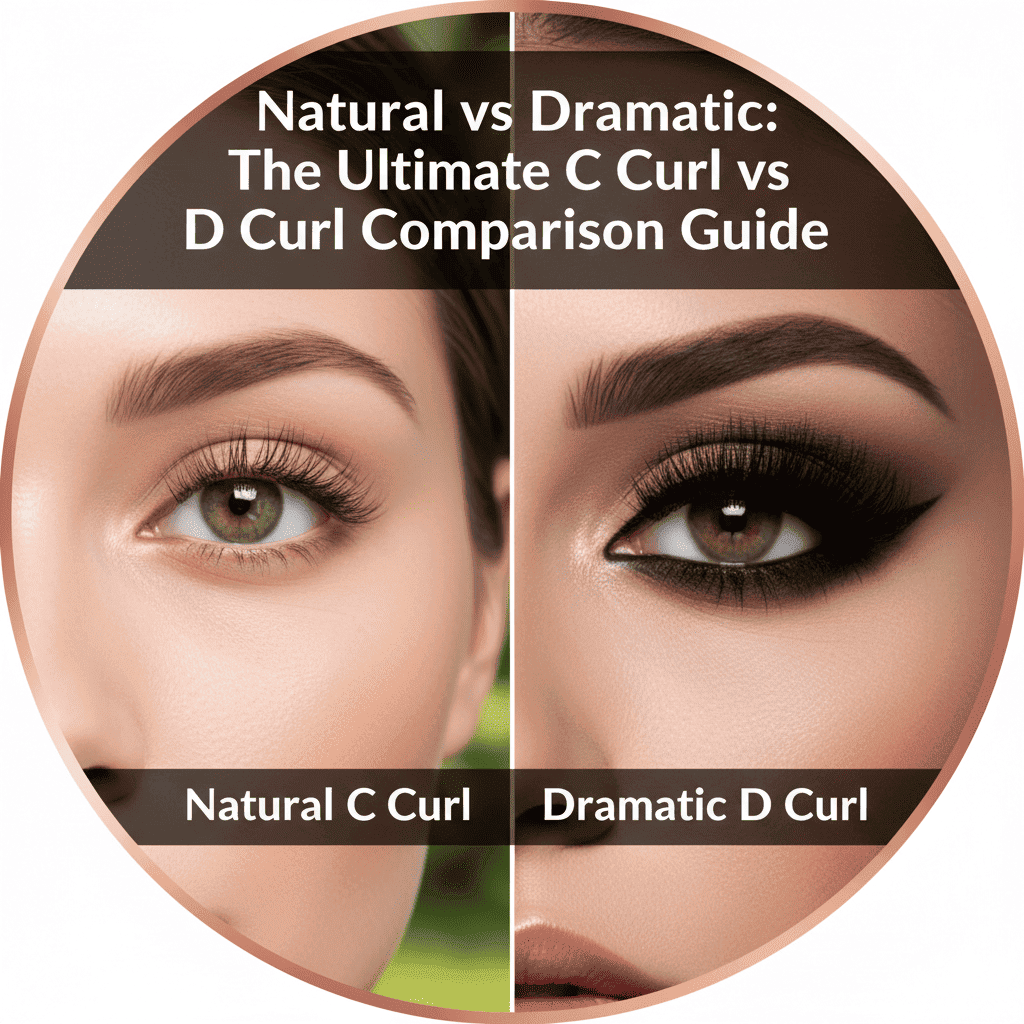
Natural vs Dramatic: The Ultimate C Curl vs D Curl Comparison Guide
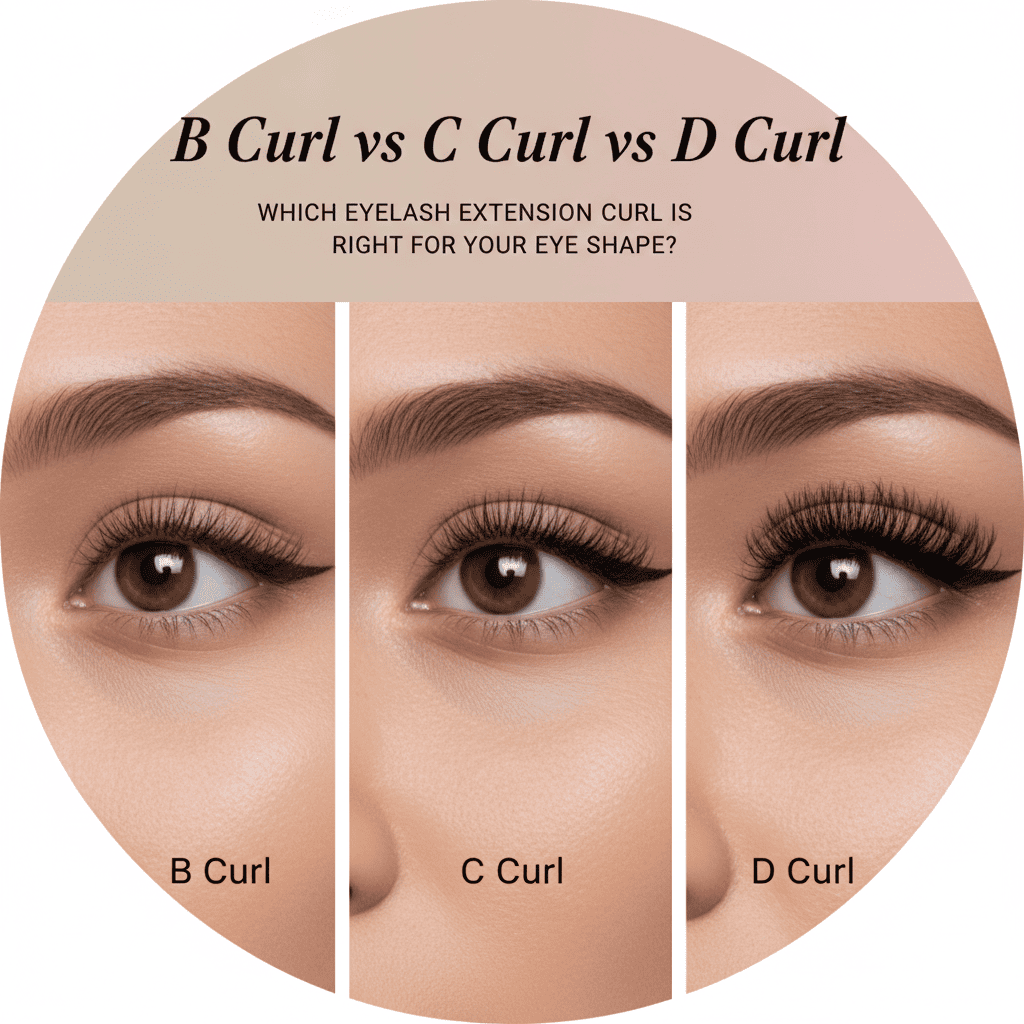
B Curl vs C Curl vs D Curl: Which Eyelash Extension Curl is Right for Your Eye Shape?
